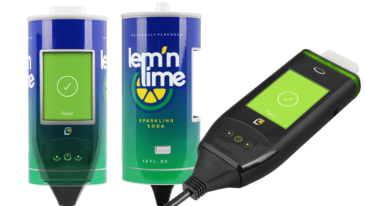
We all know that driving under the influence is dangerous, but perhaps you didn’t realize just how dangerous and costly it can be. Below, you will find some driving under the influence facts that we hope will spread awareness of the costly and horrible consequences brought forth by drinking and driving — other than just fines and a mandatory car breathalyzer.
Read on to learn more.
Facts About Driving Under the Influence
BAC (blood alcohol content) directly correlates with driving ability – Various controlled course tests have illustrated that drunk driving impacts a person’s ability to drive a motor vehicle safely. Alcohol affects their:
- Judgment
- Reaction times
- Attitude
- Depth perception
- Control
There is a linear trend of skill diminishment as a function of BAC. The higher the BAC, the worse a driver is at speed control, lane positioning, suddenly braking, and reacting to other obstacles or vehicles.
It takes hours to sober up – If you have a .08 BAC, it will likely take at least 6 hours for your body to rid itself of alcohol completely. Your liver cells metabolize alcohol at a rate of .015g/100mL/hour, which translates to a .015 BAC reduction per hour. Despite popular myths, taking measures such as drinking coffee, eating bread or other foods, taking illegal stimulants, exercising, or hopping in a cold shower will not change your alcohol level.
Millions of people drive drunk every month – According to the CDC’s 2012 Behavioral Risk Factor Surveillance System Survey, 4.2 million adults reported that they had driven inebriated at least one time during the previous month. Extrapolated, that would result in 121 million episodes per year. Of these, 4 out of 5 were men, with young men accounting for a significant majority of the total figures.
Exponentially more people drive drunk than are arrested – In 2016, according to FBI statistics, 1 million drivers were arrested for driving under the influence. That accounts for less than a percentage of the self-reported episodes of alcohol-impaired driving. This means that only 1 out of every 100 drunk drivers is actually caught violating the law, which is terrifying. On top of that, some are charged with a less severe conviction like a DUI misdemeanor vs a felony.
A DUI is rarely the result of a first-time offense – A 2011 CDC study found that a drunk driver will drive 80 times under the influence prior to their first arrest. Naturally, if a person feels as if they got away with it without a DUI or DWI charge, they will be less scared of doing so the next time. As time progresses, a dangerous pattern of behavior forms and drinking and driving becomes a regular occasion.
Alcohol-impaired driving accounts for a significant minority of vehicle fatalities – According to the NHTSA, in 2017 there were 10,874 fatalities in motor vehicle traffic crashes involving drivers who had a .08+ BAC. This accounted for 29% of the 37,000 traffic fatalities that year. The 10,854 fatalities can be broken down accordingly:
- 6,618 (61%) were intoxicated drivers.
- 3,074 (28%) were passengers inside the vehicle.
- 1,181 (11%) were innocents who were hit by the driver.
DUI’s Occur Regularly – On average, an American is tragically killed in a drunk driving crash every 48 minutes. Extrapolated, that’s 29 people per day and 10,550 per year. In addition, someone experiences injury caused by a drunk driver every 2 minutes.
Buckling Up Can Save Your Life – According to the 2010 report, The Economic and Societal Impact of Motor Vehicle Crashes, “When properly fastened, seat belts provide significant protection to vehicle occupants involved in a crash. The simple act of buckling a seat belt can improve an occupant’s chance of surviving a potentially fatal crash by from 44 to 73 percent, depending on the type of vehicle and seating position involved.” A seat belt is often overlooked for its measure of safety, but it sometimes can be the one thing that saves your life in severe accidents.
Seatbelt use was estimated to have prevented:
- 12,500 fatalities
- 308,000 serious injuries
- $50 billion in injury-related costs
Lack of seatbelt use resulted in:
- 3,350 alcohol related fatalities
- 54,300 serious injuries
- $10 billion in costs
People who drink at a young age a more likely to cause alcohol-related accidents – As you might expect, those who start drinking alcohol at a younger age are more likely to become alcoholics and make poor decisions related to alcohol consumption. A 2006 National Institute on Alcohol Abuse and Alcoholism study found that kids and teens who started drinking before they were 16 were 7 times more likely to be in alcohol-related accidents during their lifetime.
A significant minority of all underage alcohol-related deaths are crashes – According to the same NIAAA study mentioned previously, every year, there are some 5,000 people under the age of 21 who die due to alcohol-related complications. Of those, 1,900 (38%) deaths were directly caused by motor vehicle crashes.
Be Smart
If you do not want to become another tragic statistic, it is essential that you obey the rules of the road. Despite the risk of a DWI or DUI conviction, jail time, and losing your driving privileges, driving under the influence is a foolish decision that endangers yourself and your motoring neighbors. If you do go out drinking alcohol, have a designated driver or order a Lyft or Uber so that you can protect yourself and others from fatal accidents.
Sources:
Hindawi. Study of the Effects of Alcohol on Drivers and Driving Performance on Straight Road. https://www.hindawi.com/journals/mpe/2014/607652/
Bowling Green State University. Alcohol Metabolism. https://www.bgsu.edu/recwell/wellness-connection/alcohol-education/alcohol-metabolism.html
CDC. Alcohol-Impaired Driving Among Adults — United States, 2012. (2012). https://www.cdc.gov/mmwr/preview/mmwrhtml/mm6430a2.htm
FBI. Crime in the United States. https://ucr.fbi.gov/crime-in-the-u.s/2016/crime-in-the-u.s.-2016/tables/table-18
CDC. Morbidity and Mortality Weekly Report. Vital Signs: Alcohol-Impaired Driving Among Adults — United States, 2010. (2011). ftp://ftp.cdc.gov/pub/publications/mmwr/wk/mm60e1004.pdf
NHTSA. Alcohol-Impaired Driving. (2017). https://crashstats.nhtsa.dot.gov/Api/Public/ViewPublication/812630
NHTSA. The Economic and Societal Impact of Motor Crashes, May Revised (2015). (2015). https://crashstats.nhtsa.dot.gov/Api/Public/ViewPublication/812013
NIAAA. Underage Drinking. https://pubs.niaaa.nih.gov/publications/AA67/AA67.htm


